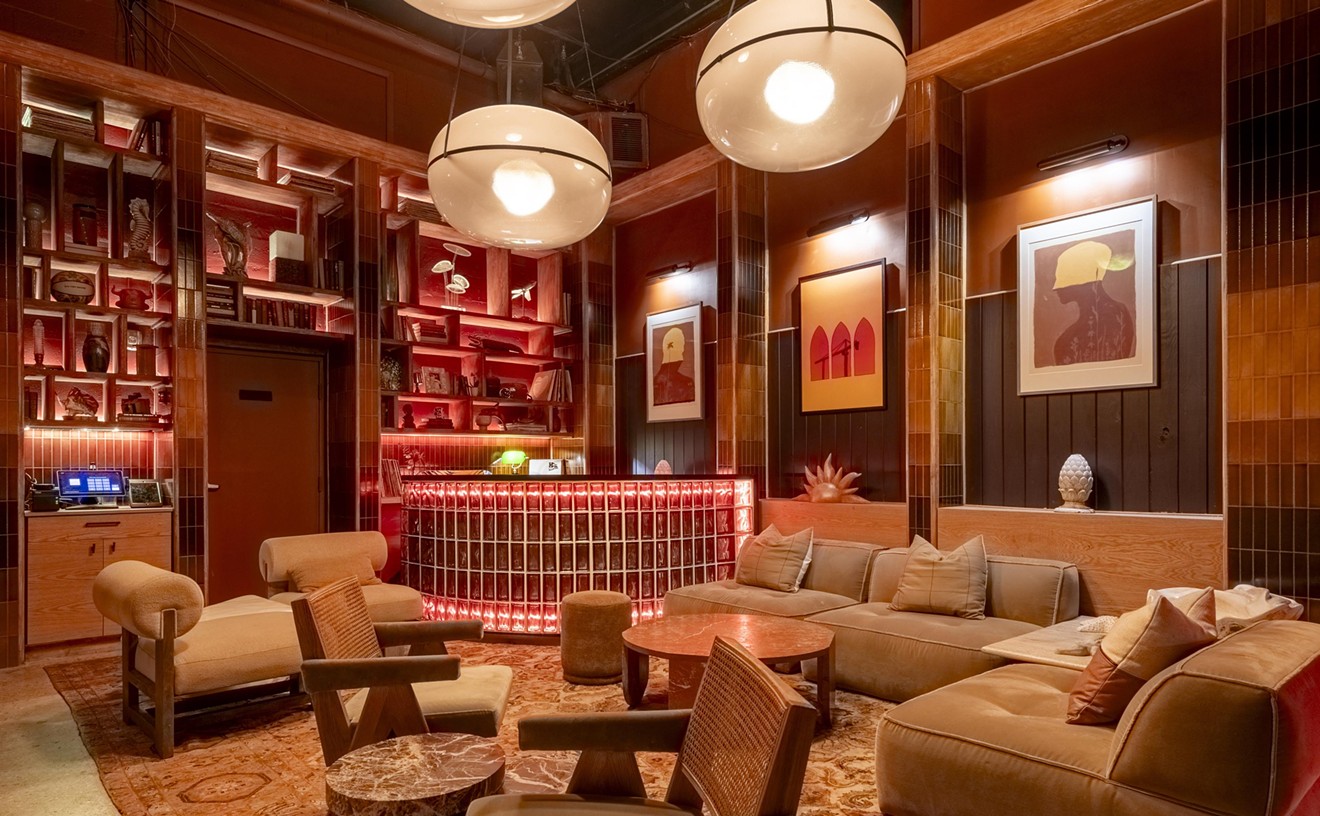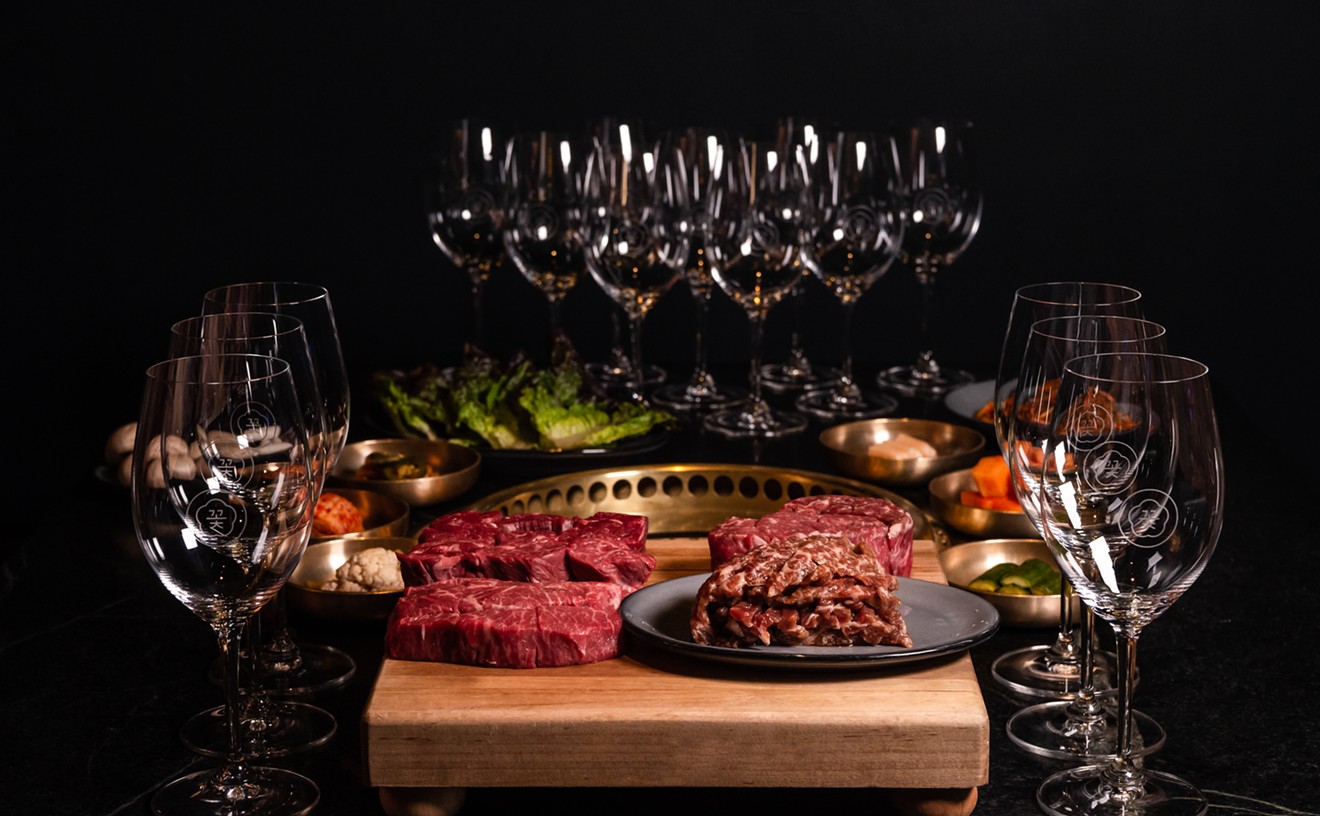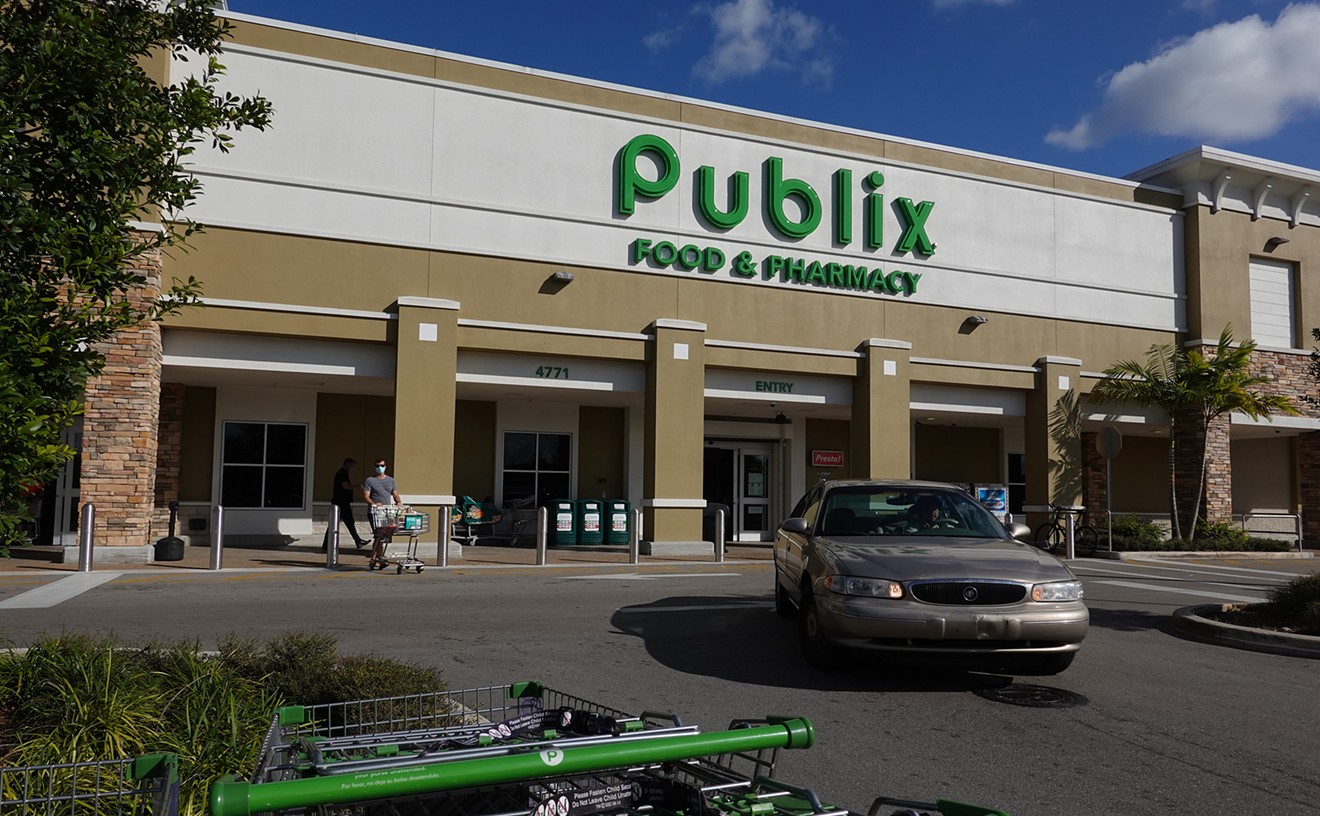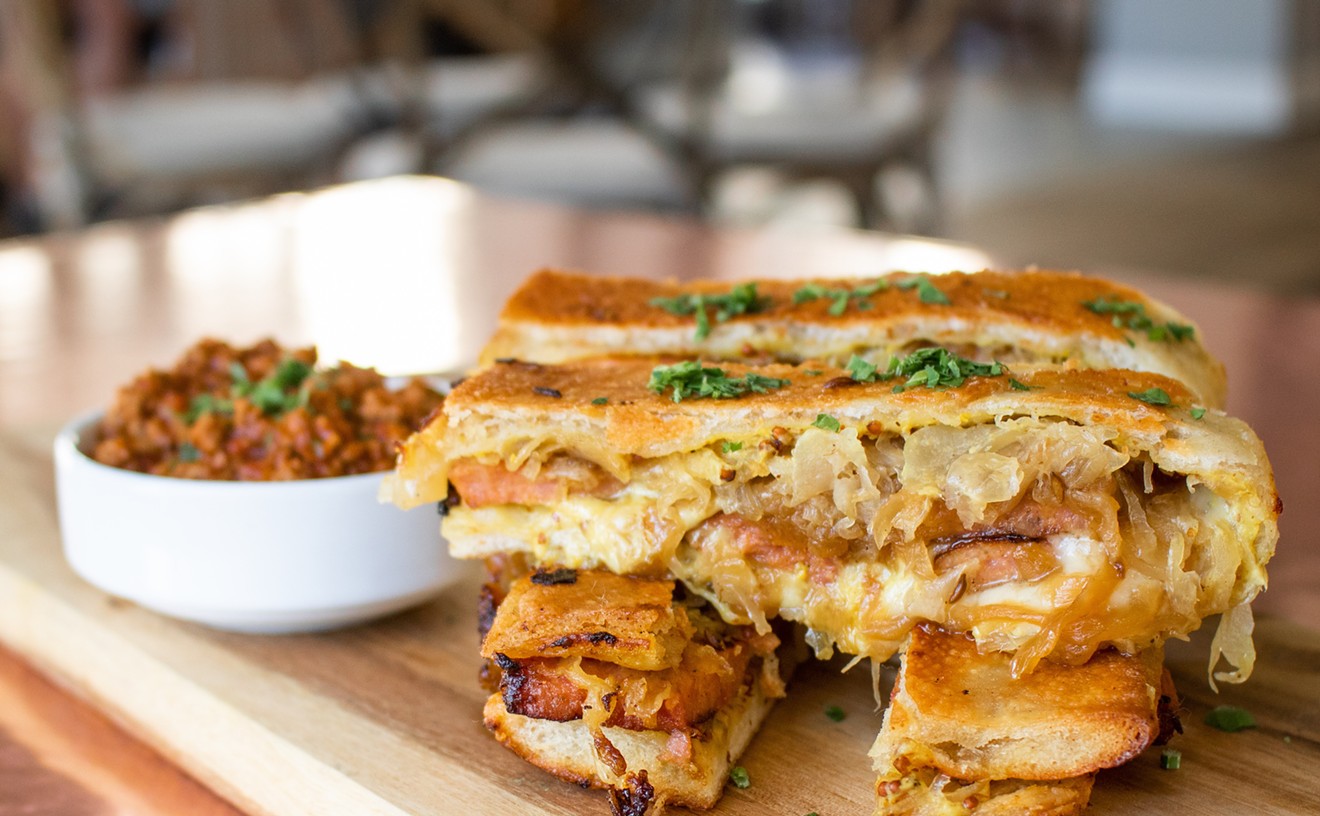Sharon Morla was a greedy kid. While growing up in Lima's San Isidro neighborhood, she would often tease a fistful of nuevo soles out of her parents and avoid her sister and friends while scouring the streets for her favorite carrito sanguchero.
Each rickety metal cart shaded by a technicolor awning was a godsend for her and other ravenous middle-class Peruvians. Most of the carts specialized in a single sandwich, such as crackly chicharrones stuffed inside the love child of a crunchy baguette and a dense, fluffy focaccia. Each bite came flecked with fried bits of sweet potato and tart salsa criolla made with sliced red onion, ají amarillo, cilantro, lime juice, and vinegar.
For Morla, now 39 years old, it was the burger cart at the end of the rainbow. "It was crazy; it was huge," she recalls of the sandwich. "There was egg, potato sticks, lettuce, tomato, cheese, and too many sauces — spicy sauces, red sauce, pink sauce, yellow sauce."
"The bread absorbs that oil and, oh my God, it's the best thing in the world."
tweet this
At downtown Miami's Station 28 Peruvian Hamburgers & Sandwiches, she and partner Martin Villacorta, 48, offer a replica of that burger alongside an array of the regional sandwiches that have become legendary in her home country and lately have been conquering Miami's food scene.
Station 28's brick-floored space, which was once occupied by Reggae Tacos, is little more than a breezeway leading to a maze of hidden restaurants and courtyards. The tender buns offered here are the perfect vehicle for fillings such as piquant lomo saltado, with stir-fried beef, red onions, peppers, and French fries. The bread soaks up every excess drop of soy sauce, white-wine vinegar, and funky oyster sauce. "These sandwiches are the best in world," Morla says.
Miami's Peruvian sandwich shop owners say these creations have been around their homeland for nearly a century, though their exact origins are unclear. There's no hint of their history inside culinary icon Gastón Acurio's first English-language cookbook, Peru, which was released earlier this year. But their popularity in Lima and beyond is undeniable.
The ebullient, wavy-haired Acurio lent his name to a sanguche chain in the mid-'00s, and his cookbook offers recipes for sandwiches filled with Peruvian-style roast beef, fried fish roe, and roast pork. Famed shops such as Lima's Pastelería San Antonio have served a dizzying variety of sandwiches since the 1950s. Meanwhile, the carrito sangucheros were a staple of daily life in Peru's major cities until the government in the early '90s began forcing peddlers indoors, Morla says. The move, though, helped propagate brick-and-mortar sangucheros on street corners across that country.
Now shops are popping up in Kendall, downtown Miami, and even Hollywood. Beyond South Florida and the rest of the Sunshine State, carts and restaurants from Arkansas to Washington state offer Peruvian sandwiches filled with the cured-and-braised ham butifarra. Driving the craze are the seemingly endless possibilities that can be spun from Peru's myriad culinary influences. Shades of Asian, European, and indigenous gastronomies easily fit into this bit of what is already one of the world's greatest cuisines.
Some of those possibilities are up for grabs at Mr. & Mrs. Bun in Kendale Lakes, near the edge of the Everglades. Here husband-and-wife team Vanessa Rivera, 33, and Gian Carlo Accinelli, 34, forwent a white wedding and instead, in April, opened a quaint space with romantic quotes scribbled in chalk on every wall. The pair had planned a more traditional Peruvian restaurant with ceviches, causas, and the skewered-and-grilled meat called anticuchos. But the plan changed after they spent more than two months eating through Lima's markets and sandwich shops.
"When you go to a store, you see they're doing everything fresh, you smell the baking bread. I wanted that," Accinelli says.
He arrives each day at 7 a.m. to make the fluffy rolls they've named "pan cholo" with little more than yeast, flour, and milk. The result is an amalgam of Station 28's ethereally soft potato buns and the dense chew of French brioche. He bakes more than 200 buns a day in batches of about 50, and they're the ideal medium for conveying Peru's Asian influences. For pollo chi jau kay, fried chicken thighs are doused in a combination of soy sauce, oyster sauce, sesame oil, and Chinese five-spice powder and then topped with the spicy pickled cabbage slaw encurtido. There's a spin on the beloved fried-seafood hodgepodge jalea, featuring crunchy fish, shrimp, and squid sprinkled with salsa criolla and dotted with homemade tartar sauce.
Accinelli also dishes out pristine examples of the classics. His butifarra begins by giving a boned-out pork leg a two-day brine in garlic, red onion, and Peruvian oregano. It marinates for another day in a similar blend amped up with cumin and achiote before a four-hour boil in chicken stock. It's chilled and sliced but still maintains all of that fatty richness, brightened by a tangy tousle of the ever-present salsa criolla.
A similar standby is offered at La Mar, Gastón Acurio's elegant cebichería on the ground floor of Brickell Key's posh Mandarin Oriental. Two months ago, 32-year-old executive chef Diego Oka began offering midday sandwiches. On a recent weekday, servers zip the delicacies around the weathered-wood-and-teal room before setting them before men and women in crisply pressed business suits. His lomito is a spin on the classic lomo saltado, dressed up with an oozing fried egg and a bird's nest of razor-thin potato strings. It's a sight to behold, stacked high between two slices of Zak the Baker bread. But it's easier to manage with a fork and knife than bare hands.
La Mar's quinoa burger, meanwhile, perfectly captures the culinary possibilities of Peruvian sandwiches. The toothsome, trendy grain has been a staple for thousands of years in South America's highlands. Oka blends the little red flecks with kabocha squash purée, garlic, shredded carrots, and portobello mushrooms. Beet juice stains the patty bright red, and ají amarillo offers a fading perfume of spice. More flavor comes from the rose-colored rocoto aioli that's slicked onto soft buns with alfalfa sprouts and a sweet onion confit.
Like the other expatriate Peruvians sharing their sandwiches with the Magic City, Oka is driven by strong memories of the sandwiches he ate growing up in Lima. They were built around the spicy, deep-red sausage salchicha de huacho. Relatives from the north would bring down a pound or two a few times a year that the family would fry up and tuck into French bread.
"The bread absorbs that oil and, oh my God, it's the best thing in the world," Oka recalls fondly. "I had my first frita maybe a month ago and thought it was similar but not quite as good. Salchicha de huacho is the real thing."
For more follow Zach on Twitter or Instagram.










